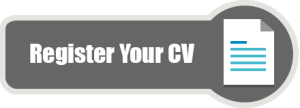How to Dress for Interview Success
Interviewers may base their first impression of you based on how you choose to dress yourself. Dressing sloppily suggest to the interviewer that you are lazy and unenthusiastic about committing yourself to the company, which will be detrimental to your chances of making it in. Consequently, it is imperative that you dress appropriately for your interview. However, what some people may be confusing is how to “dress appropriately” when there are so many different dressing codes. Here is the roundup of dress codes that you may be given by the company for your next interview and what each of them mean.
Business Formal – This code may also be known as “corporate”. As the name suggest, this is the most formal of dress codes, and is usually expected from big, formal companies or for companies who are in more traditional industries such as finance or law. The recommended attire are as follows:
Men:
- Tailored suit in a neutral colour such as black or navy.
- White, button up shirt with a collar. Make sure that the shirt is not wrinkly.
- A neutral coloured tie.
- Closed toe shoes in neutral colour.
Women:
- Tailored suit or skirt suit in a neutral colour. Make sure that skirts are not too short, or wear skirts with tights.
- White, button up shirt with a collar.
- Closed toe heels.
Business Casual – This is the ‘in between’ dress code where attire is not too conservative but still relatively smart. Unfortunately, the term ‘business casual’ means different things for different companies, so always double check with the company to understand what type of clothing is expected. Generally, this is what is expected:
Men:
- Buttoned up, collared shirt in any colour
- Ties are optional
- Sweaters are acceptable, however it would be recommended to keep the colouring neutral.
- Chinos or dress slacks
- Shoes can be flexible, so oxfords, loafers or any other closed toe shoe choice would be acceptable. However, it would be best to avoid sneakers as that may be considered too casual.
Women:
- Business separates
- Cardigans instead of blazers
- Coloured shirts or blouses
- Comfortable flats, loafers or any other closed toe shoes are acceptable.
Casual – Casual attire has become increasingly popular over the last few years, and is particularly popular with smaller businesses and in less traditional industries such as engineering and technology. Generally, almost anything works with this dress code. However, try to keep in mind that you are still going to be presenting yourself to an interviewer, so try to avoid anything too casual such as ripped jeans or bright, printed tees.
Men:
- Collared polos or sweaters work. Even though it is a casual attire, still make sure that your choice of top still has a collar.
- Casual pants and slacks, but avoid jeans.
- Any type closed toe shoes works. Make sure that they are clean.
Women:
- Tops and blouses
- More casual pants or skirts are allowed
- Almost any type of shoe would work, including open toe shoes. However, still try to avoid flip flops or sneakers.
No matter what, always talk to the company before the interview to make sure that the outfit you have in mind is appropriate. If still in doubt, it is always better to overdress than underdress as employers like to see someone who is willing to put in extra effort.



